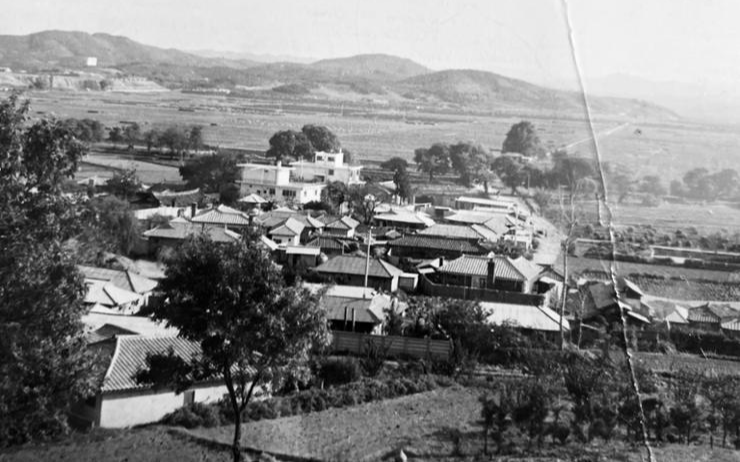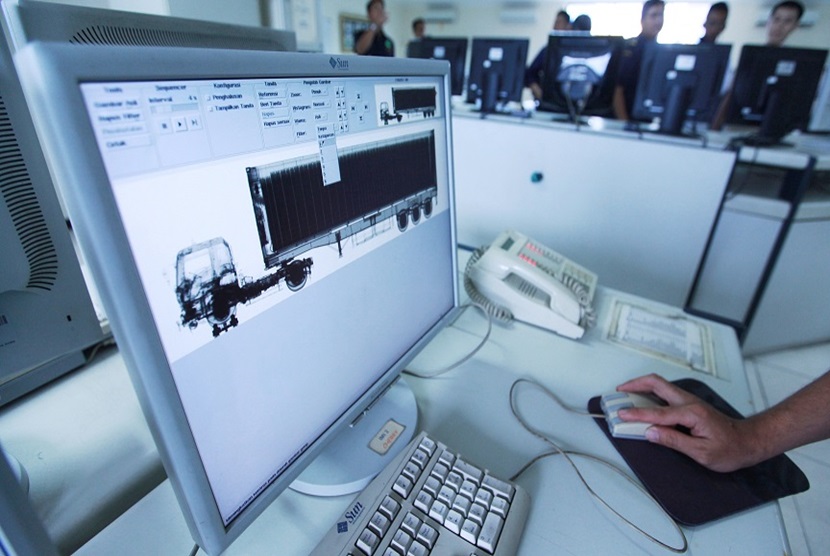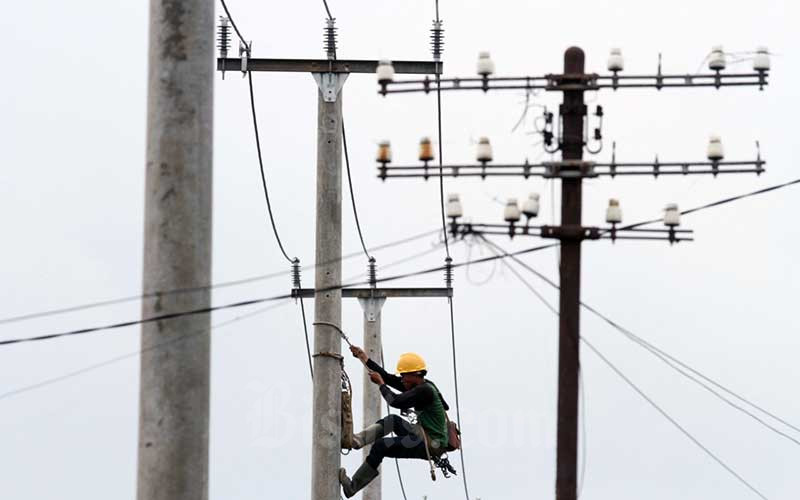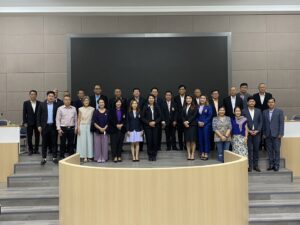[ad_1]

A view of Maigokri in the early 1970s. The clinic and cottage are visible in the center of the photo near the trees. Courtesy of D. H. Wilkinson
By Steven L. Shields
When Western missionaries came to Korea in 1885, their mission work focused on education and medical care. The huge churches they are known for today came along later. Such is the case, albeit almost a century later, with a small Midwest U.S.-based denomination called “Community of Christ.” Community of Christ members had been among the thousands of U.S. military personnel in Korea during the 1950-53 Korean War and afterward. Naturally, their Korean friends became aware of their denomination and its focus on the social gospel as described in the New Testament.
In the early 1960s, social safety nets took a distant third behind infrastructure and economic development. Services such as health care needed massive funding. The government was struggling to pull Korea out of the poverty inflicted on it by decades of Japanese misrule, civil war and political strife. Access to basic health care was a distant dream for many in Korea.
Esme Smith, a young Australian nurse, caught the missionary spirit in her youth and yearned to go someplace where she could be helpful. Through a missionary friend in Korea, Esme offered to be of service. A dental school student at Seoul National University helped her get a position teaching nursing. After a few years, the idea of a rural medical mission took root among the Korean church members and their missionary partners from Australia. Soon, the dream of medical care access began to take shape in Asan, South Chungcheong Province.

. This 1966 photo shows the bridge into the village of Maigokri, with the clinic building barely visible to the left of the utility pole. Steven L. Shields Collection
Putting the social gospel at the forefront of their ministry in Korea, the denomination looked to what was then a much-neglected rural area that was light years away from Seoul. Fifty-eight years ago, in 1966, this little denomination built a clinic in the rural outskirts of the region, nestled within a quaint village called Maigokri.

Taken in 2000, the old bridge still in use, and the clinic building on the hill above the village. Courtesy of Steven L. Shields
A modern three-story building was built on a hilltop overlooking the hamlet. Esme moved from Seoul to a small room in the building, where she lived alone for a few years. Using her well-honed Korean language skills, she quickly took to training a few local women as assistants. The SNU medical school student doctors and dentists visited once a month or so to help with the more challenging needs.
With no telephone service and the nearest railway station in Cheonan, almost a day’s walk away, Esme’s primary means of contacting church leaders in Seoul was through the postal service. Some of her letters to the office are quite charming. “Next time someone comes down from the city, I would appreciate a bottle of shampoo as I am almost out.” In another, she writes, “I need 100 toothbrushes and toothpaste for the children.” She regularly visited primary schools in the county’s two or three dozen villages.
After about four years alone and with a burgeoning patient load, Esme needed help. A young couple from the U.S., Dorcas Hentz Wilkinson and her husband Larry, plus their infant son, took up residence in a newly built cottage behind the clinic. They were joined shortly after by their second child, who was born in the clinic with Esme delivering.

The small house behind the clinic was where the Wilkinson family resided for several years. Courtesy of Steven L. Shields

The cross placed on the rooftop in 1966 still keeps vigil over Maigokri in the spring of 2000. Courtesy of Steven L. Shields
Dorcas, a registered nurse, had worked for several years on the SS Hope, a civilian hospital ship that sailed the world in the 1960s and 1970s taking medical care to places in need. Larry, an administrator, took on the task of dealing with the increasingly long list of patient records and other paperwork. He also became the chief procurement officer for the clinic’s supply needs.
The clinic staff did not neglect to preach the gospel, along with their medical ministry. Regular church services were held in a room at the clinic. Esme, Dorcas and a small staff of doctors and dentists provided basic prenatal care, well-baby care, delivered babies and gave first aid. They also taught children throughout the county how to brush their teeth.
The missionaries in the late 1970s turned over full control of the clinic to Korean medical staff, who continued to see patients for medical and dental work for the next decade. When Korea’s new national health care system was launched in the 1980s, the old clinic building had become redundant, and the church sold the property to a local farmer.

A view of the abandoned clinic building in the spring of 2000/ Courtesy of Steven L. Shields
The vacant building was lonely for many years until the early 2000s when a local church (unrelated to Community of Christ) moved in and set up a congregation. In 2016, after 50 years of service in a faraway place, the government attached the property to build a modern road to connect the village with Cheonan.

A view of Maigokri taken in 2023. The recently built bridge to the left is in the same place as the bridge in 1966. Courtesy of Steven L. Shields
The villagers long remembered the work done by Esme, Dorcas, Larry and the steady stream of medical and dental students who traveled down from Seoul to help.
In 2000, I traveled to Asan with my church secretary, Ms. Lee. As we drove west from Cheonan, she commented that she had been raised in the village to our left, some miles distant. I mentioned that the denomination had operated a clinic at Maigokri. She told me Maigokri was just down the road to the right, so we detoured. Then she remembered two “white women” who had come to her elementary school with toothbrushes and toothpaste when she was a child. They taught her how to brush her teeth properly. We were both certain those two women were Esme and Dorcas.

A winter view of the clinic in the early 1970s / Courtesy of D. H. Wilkinson
The Royal Asiatic Society Korea has dedicated its 124 years of service to Korea by researching, preserving and telling stories from Korea’s past, especially those that might otherwise become lost. Join RAS Korea on Tuesday evenings in Seoul for lectures, or on one of our weekend cultural excursions. Visit raskb.com for details of upcoming events.
Rev. Steven L. Shields is president of the Royal Asiatic Society Korea and a columnist for The Korea Times.




